Disclosure: This article contains affiliate links. We may earn a commission from purchases at no extra cost to you, which helps our travel content.
¡Hola mis aventureros! Anyone can snap the Golden Gate Bridge (and yes, you absolutely should), but San Francisco's soul lives in its lesser-celebrated corners. After 12 visits to this foggy paradise—four with my camera-obsessed husband before he became my ex—I've discovered the city's most photogenic secrets that don't make every tourist's itinerary. This fall, my best friend Elena and I escaped Portland's rain for a girls' weekend in SF, armed with our cameras and a mission to capture the city's essence beyond the postcard shots. What we discovered were intimate vignettes of San Francisco that tell a deeper story than any bridge can (sorry, Golden Gate, you're still magnificent). Whether you're planning a romantic weekend or seeking fresh content for your social feeds, these seven spots will give you frame-worthy memories without the photobombing crowds.
1. The Colorful Staircases of the 16th Avenue Tiled Steps
If Instagram were to manifest as a physical location in San Francisco, it would be these hidden mosaic staircases. The 16th Avenue Tiled Steps Project transformed ordinary concrete stairs into a sea-to-stars themed masterpiece that climbs up Moraga Street between 15th and 16th Avenues.
Elena and I arrived at 7:30 AM on a crisp October morning, coffee in hand (essential for any photo expedition, trust me). The early hour rewarded us with golden light streaming across the tiles and—most importantly—no other humans in our shots. By 9 AM, couples were lining up for their turn to pose, so madrugadores (early birds) definitely catch the photo worm here.
After capturing the main 16th Avenue steps, we discovered two more nearby staircases worth exploring: the Hidden Garden Steps on 16th Avenue between Kirkham and Lawton, and the Lincoln Park Steps near California Palace of the Legion of Honor. The latter offered a completely different aesthetic with its classical design—perfect for couples looking for a more elegant backdrop.
I shot primarily with my mirrorless camera, but Elena's smartphone portraits with the steps' vibrant colors were equally stunning. The key is to play with perspective—shoot from below looking up, from above looking down, and detail shots of the intricate tile work.

💡 Pro Tips
- Arrive before 8 AM for people-free photos, especially on weekends
- Bring a wide-angle lens to capture the entire staircase in one frame
- Look for detail shots in the mosaic tiles that tell their own mini-stories
2. The Wave Organ: Nature's Symphony in the Marina
When I first discovered the Wave Organ with my then-husband on our architectural tour of San Francisco, I couldn't believe this acoustic sculpture wasn't on every tourist map. Created by artist Peter Richards and sculptor George Gonzales, this stone installation at the end of a jetty in the Marina district literally plays music created by the ocean waves.
The best photos here happen during high tide when the water activates the organ's pipes, creating both visual drama and haunting sounds. During our recent visit, Elena and I timed our arrival for sunset at high tide (check tide schedules online before you go). The golden hour light transformed the pale stone into warm honey tones while the San Francisco skyline provided a perfect backdrop across the bay.
What makes this spot magical for couples photography is its isolation—you'll likely have the area to yourselves if you visit on a weekday. The curved stone seating areas create natural frames, and the interplay of water against the jetty adds movement to otherwise static architectural shots.
The walk to the Wave Organ is about half a mile from the nearest parking, so wear comfortable shoes and bring a small camera backpack rather than lugging heavy equipment. My favorite shots here combine the textural elements of the stone installation with the soft blur of the city skyline in the background.

💡 Pro Tips
- Check tide tables and plan your visit during high tide when the organ is most active
- Bring a tripod for low-light sunset shots and long exposures of the water
- Use a medium telephoto lens to compress the Wave Organ against the city skyline
3. Sutro Baths: Ruins With Romance
If I were directing a post-apocalyptic romance film, I'd set it at Sutro Baths. These haunting ruins of a once-grand Victorian bathhouse sit at Land's End, where San Francisco meets the Pacific Ocean in a dramatic collision of history and nature.
During our fall visit, the typical San Francisco fog (locals call it Karl) rolled in around 4 PM, creating the most ethereal atmosphere for photography. Elena and I spent hours here as the concrete ruins transformed from clearly defined structures to ghostly silhouettes in the mist. For couples photography, these ruins offer unmatched moody backdrops that feel both intimate and expansive.
The key to great Sutro Baths photos is patience and timing. The light and fog conditions change rapidly, sometimes within minutes. We found that shooting just before sunset provided the most dynamic range of options—from golden light on the concrete to dramatic silhouettes against the ocean.
The terrain around Sutro Baths can be slippery and uneven, so I recommend wearing hiking boots or trail shoes with good grip. I nearly took an unexpected swim when I ventured too close to the water's edge for that perfect shot! My waterproof camera bag saved my gear during a sudden rain shower—essential protection in San Francisco's unpredictable coastal weather.
Don't miss exploring the tunnel near the baths for framed shots of the ocean, and climb up to the Cliff House site for panoramic views that capture the full context of the ruins against the vast Pacific.

💡 Pro Tips
- Visit on weekdays to avoid crowds in your shots (weekends get packed by midday)
- Bring neutral density filters to capture long exposures of the ocean water moving through the ruins
- Look for reflections in the remaining pools after rainfall for mirror-effect photos
4. Clarion Alley: Street Art Paradise in the Mission
¡Dios mío! As someone who grew up surrounded by vibrant Spanish street art, Clarion Alley feels like home to me, but with a distinctly San Franciscan political edge. This narrow passage in the Mission District between Valencia and Mission Streets has been transformed into an ever-changing open-air gallery by the Clarion Alley Mural Project since 1992.
What makes this spot special for photography is how the art evolves—visit twice in one year and you'll likely capture completely different murals. During our weekend trip, Elena and I spent an entire morning here, fascinated by how the political messages in the artwork reflected San Francisco's progressive identity.
For couples photography, these colorful backdrops create vibrant, personality-filled portraits that go far beyond standard tourist shots. The key is finding murals that resonate with your personal aesthetic or message. Some are boldly political, others whimsically artistic—there's something for every visual preference.
The alley gets busy with both tourists and local artists, so early morning (before 10 AM) offers the clearest shots. We found Sunday morning particularly quiet. The light in the alley can be tricky—harsh shadows and bright colors create challenging exposure situations. I recommend using a circular polarizing filter to manage reflections and enhance the mural colors without oversaturation.
While photographing, remember this is both an art space and residential area. We always ask permission when photographing artists at work, and avoid blocking residents' access. The Mission District offers fantastic Mexican food options nearby—perfect for refueling after your photo session. El Farolito's super burritos gave us the energy for our afternoon shooting locations!

💡 Pro Tips
- Photograph both wide shots of entire murals and detail shots that highlight interesting elements
- Visit during different times of day—morning for clearer shots, afternoon for more artists and local culture
- Research current murals online before visiting as some carry powerful political messages you might want to understand
5. Lovers' Lane Eucalyptus Grove in the Presidio
There's something about walking through a tunnel of trees that feels like entering another world. The Wood Line (often called Lovers' Lane) in the Presidio is artist Andy Goldsworthy's sinuous sculpture created from fallen eucalyptus trunks, winding through a eucalyptus grove like a wooden river.
This spot holds special memories for me—it's where my ex-husband proposed years ago. Returning with Elena felt like reclaiming the space with new memories and perspectives. The dappled light filtering through the eucalyptus trees creates natural spotlighting that photographers dream about. In autumn, the quality of light becomes even more magical as the sun sits lower in the sky.
For couples photography, this location offers intimate forest settings without leaving the city. The curved line of logs creates a natural leading line that draws the eye through your composition. We discovered that positioning subjects along the wooden path while shooting from different angles yielded the most compelling images.
The best light happens in late afternoon when the sun streams sideways through the trees, creating dramatic light rays if there's a bit of fog or mist (common in SF, even in fall). A lens hood is essential here to prevent lens flare from the scattered sunlight through trees.
After photographing the main Wood Line installation, don't miss Goldsworthy's other nearby works in the Presidio—Spire and Tree Fall offer equally photogenic opportunities with completely different aesthetics. Together they create a perfect photography walking tour that most tourists never discover.

💡 Pro Tips
- Visit on foggy mornings for ethereal light rays through the eucalyptus trees
- Use a person walking along the logs as scale to show the installation's impressive length
- Shoot both along the path and perpendicular to it for completely different perspectives
6. Fort Point: The Bridge's Secret Underbelly
Everyone photographs the Golden Gate Bridge from afar, but few venture to Fort Point, the Civil War-era fortress nestled directly beneath the bridge's southern anchorage. This spot offers perhaps the most dramatic and unique perspective of the iconic structure—looking up at its massive underbelly.
Elena and I arrived at Fort Point just as the national historic site opened (Friday-Sunday, 10 AM-5 PM). The morning marine layer was just burning off, creating that perfect soft diffused light photographers chase. From the fort's rooftop, you can capture the bridge towers emerging from wisps of fog—a quintessential San Francisco moment.
What makes Fort Point special for couples photography is the juxtaposition of industrial bridge architecture with historic brick fortress walls. The arched windows and doorways of the fort naturally frame the bridge in unexpected ways. We spent hours finding different architectural frames within the fort that perfectly showcased portions of the bridge.
The interior courtyard of the fort creates fascinating light patterns throughout the day as sunlight filters through different openings. For the most dramatic shots, climb to the top level for panoramic views of the bridge, Marin Headlands, and the bay.
The wind here can be intense, so secure any loose gear and bring a sturdy tripod if you're shooting in lower light. I use a camera strap that keeps my camera secure but quickly accessible as lighting conditions change rapidly with the moving fog.
After capturing the bridge from Fort Point, follow the coastal trail east toward Crissy Field for gradually changing perspectives of both the bridge and the city skyline—one location that delivers multiple distinct photo opportunities.

💡 Pro Tips
- Check Fort Point's limited opening hours before visiting (currently Friday-Sunday, 10 AM-5 PM)
- Bring a wide-angle lens to capture the immensity of the bridge from directly underneath
- Use the fort's brick archways as natural frames for your bridge compositions
7. Twin Peaks at Blue Hour: The City of Light
For our grand finale, Elena and I saved what I consider the crown jewel of San Francisco photography: Twin Peaks at blue hour. This 360-degree viewpoint showcases the entire city grid illuminated like a constellation of earthbound stars. While tourists flock here for daytime views, photographers know the real magic happens during the 20-30 minutes after sunset when the sky turns deep blue and city lights begin to twinkle.
We arrived about 45 minutes before sunset to secure a good spot and watch the transformation. As the sun dipped below the horizon, the city began its illuminated performance—first a few building lights, then street lamps, and finally the full urban light show against the deepening blue sky.
For couples, this location offers spectacular cityscape backdrops for silhouette portraits. Position your subject against the railing with the city lights below for a romantic urban shot that feels both intimate and expansive. The wind at Twin Peaks can be fierce (Elena's hair created some unintentionally dramatic portraits!), so come prepared with layers.
Technically, this is one of the more challenging San Francisco shots to capture well. The extreme contrast between the bright city lights and dark sky requires careful exposure balancing. I recommend bringing a travel tripod for longer exposures that capture the city glow without blurring. Shooting in RAW format gives you more flexibility to recover shadow and highlight details in post-processing.
After the blue hour fades to black, don't rush down immediately. The full night cityscape offers equally stunning but completely different photographic opportunities. We stayed until nearly 9 PM, capturing the city in various stages of evening light.
¡Qué vista más espectacular! As someone who's photographed cityscapes worldwide, San Francisco from Twin Peaks still ranks among my top five urban vistas globally.

💡 Pro Tips
- Arrive 45-60 minutes before sunset to secure a good spot, especially on weekends
- Bring a remote shutter release for shake-free long exposures during blue hour
- Try both wide cityscape shots and telephoto compositions focusing on specific neighborhoods
Final Thoughts
San Francisco has always been a city that rewards those willing to look beyond the obvious. While I'll never discourage anyone from capturing that classic Golden Gate shot, I hope these seven alternative locations inspire you to explore the city's less-trafficked corners with your camera and someone special. Each offers not just a photo opportunity but an experience—the haunting melody of the Wave Organ, the political pulse of Clarion Alley, or that magical moment when the city lights blink on from Twin Peaks. The best travel photography doesn't just show a place; it captures how it felt to be there. ¡Buen viaje y buenas fotos, amigos! If you discover your own secret San Francisco photo spots, drop me a comment below—I'm already planning my next photography weekend in this endlessly photogenic city.
✨ Key Takeaways
- Timing is everything—early mornings and blue hour offer the most magical light with fewer crowds
- Look for natural frames within the city's architecture to create more compelling compositions
- San Francisco's famous fog is your friend, not your enemy—embrace it for atmospheric photography
- The best photo locations tell stories about the city beyond its famous landmarks
📋 Practical Information
Best Time to Visit
September-November (Fall)
Budget Estimate
$150-250 per day for mid-range accommodations, transportation, and meals
Recommended Duration
2-3 days minimum to visit all locations
Difficulty Level
Easy To Moderate (Twin Peaks And Sutro Baths Involve Some Hiking)
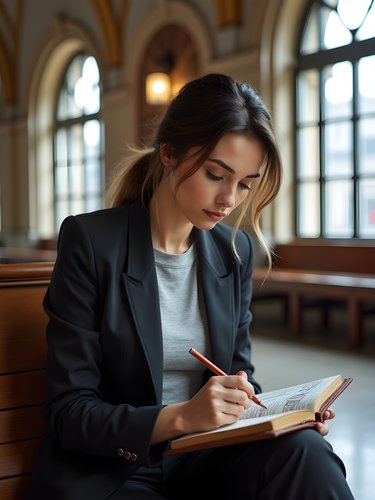
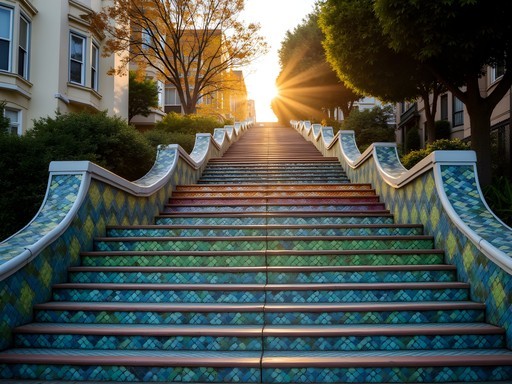







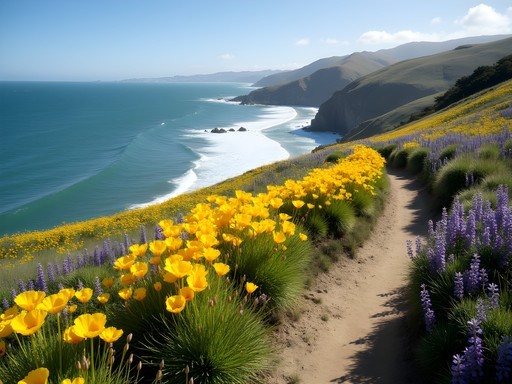
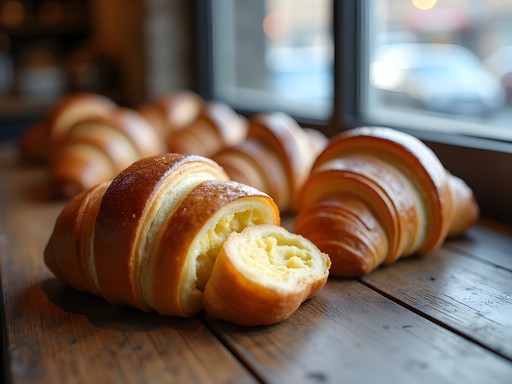
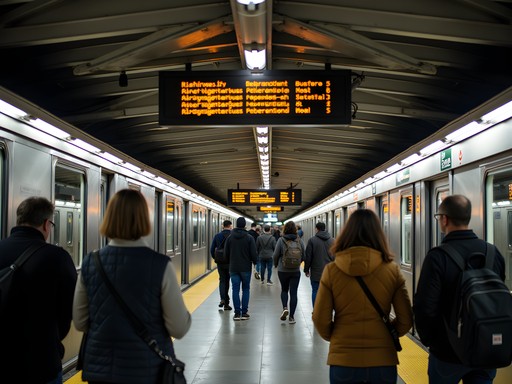
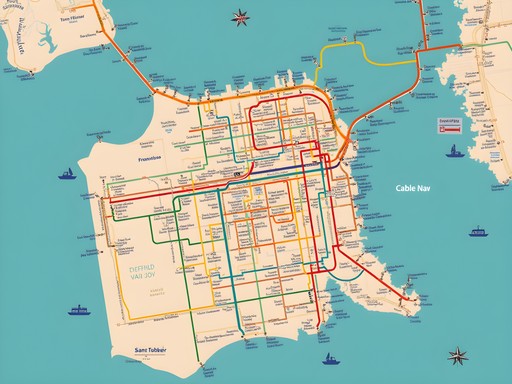
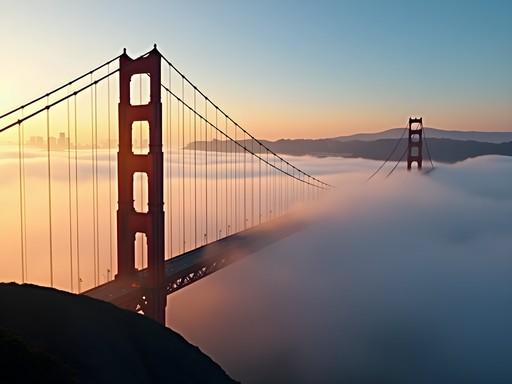
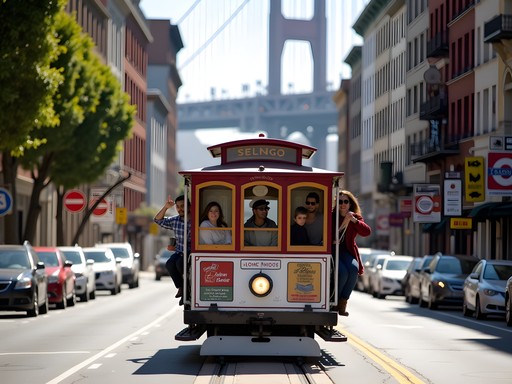
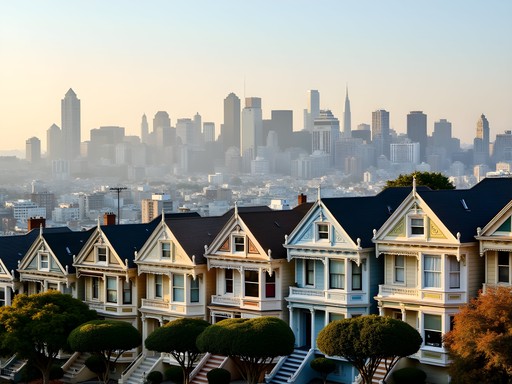
Comments
Sophia Gomez
Just got back from a business trip to SF where I snuck away to photograph some of these spots! The Wave Organ was hauntingly beautiful during a foggy morning. I'd add Fort Point to this list - it's right under the Golden Gate Bridge but often overlooked. The view looking up at the bridge from underneath is spectacular and gives you a totally different perspective than the typical postcard shots. Also discovered a charming little coffee shop nearby called Black Point Cafe that makes for a perfect warm-up spot after the morning chill. San Francisco's microclimate is no joke - layers are essential even in summer!
islandblogger
Fort Point is going on my list! Did you need to make reservations or anything?
Sophia Gomez
Nope! It's run by the National Park Service and is free to enter. Just check their website for hours as they change seasonally.
travelvibes
Your Clarion Alley shots are incredible! What time of day did you visit to avoid crowds?
Skylar Bell
Thanks! I went around 8am on a Tuesday - practically empty! Weekday mornings are your best bet.
coffeeblogger
Just added all of these to my SF itinerary! Thanks for sharing these hidden gems!
sunsetexplorer
Sutro Baths at sunset is EVERYTHING! Got engaged there last year! 💍
travelvibes
Omg that's so romantic! Congrats! 🎉
Sage Dixon
The 16th Avenue Tiled Steps are such a gem! I was there last spring and arrived just before sunrise. Had the whole place to myself for about 20 minutes before other photographers showed up. The morning light hitting those mosaic tiles is pure magic - creates this incredible sparkle effect that my mirrorless camera captured beautifully. Pro tip: climb to the top and continue up to Grand View Park for an even more spectacular panorama that most tourists miss!
islandblogger
Love this post! I'm heading to SF next month and definitely want to check out the Wave Organ. Is it better to visit during high or low tide?
Skylar Bell
High tide is definitely best! The sounds are much more pronounced when the water level is higher. Try to check tide charts before you go!
islandblogger
Thanks so much! Will do!
skylife
Your Clarion Alley shots are incredible! The colors just POP! What camera settings did you use? I'm heading to SF next month and want to up my street art photography game!
bluebuddy
Is Clarion Alley safe to visit? I love street art but I'm traveling solo and heard mixed things about the Mission area. Your photos look amazing though!
Skylar Bell
I've always felt fine there during daylight hours! It's usually got other visitors around. Just keep aware of your surroundings like anywhere in a city. The murals are absolutely worth seeing!
Frank Garcia
Totally agree with Skylar. I went around noon and it was perfectly fine. The Mission has amazing food too - grab tacos at La Taqueria after checking out the murals! I used my camera bag which was perfect for urban exploring - secure but doesn't scream 'tourist with expensive gear'.
Frank Garcia
Brilliant post! I visited SF last summer and completely agree about Sutro Baths - they're hauntingly beautiful at sunset. The light creates this ethereal glow on the ruins. I'd add that getting there via the Lands End Trail makes the experience even better. You get stunning coastal views along the way and can spot the Cliff House remains too. The Wave Organ was surprisingly empty when I visited midweek. I sat there for almost an hour just listening and watching boats pass by. Definitely one of those meditative spots that doesn't make it into most guidebooks. Did you check out Corona Heights Park? It's another great photo spot with panoramic views that's relatively uncrowded.
bluebuddy
Thanks for the Corona Heights tip! Adding it to my list for next month's visit.
cityadventurer
Those 16th Avenue steps are on my bucket list now! Your photos make them look magical. 😍
Skylar Bell
Thanks! Go early morning if you can - fewer people and better light for photos!
cityadventurer
Will do! Planning a trip for October. Any chance the fog will be gone by then?
Venture X
Premium card with 2X miles, $300 travel credit, Priority Pass